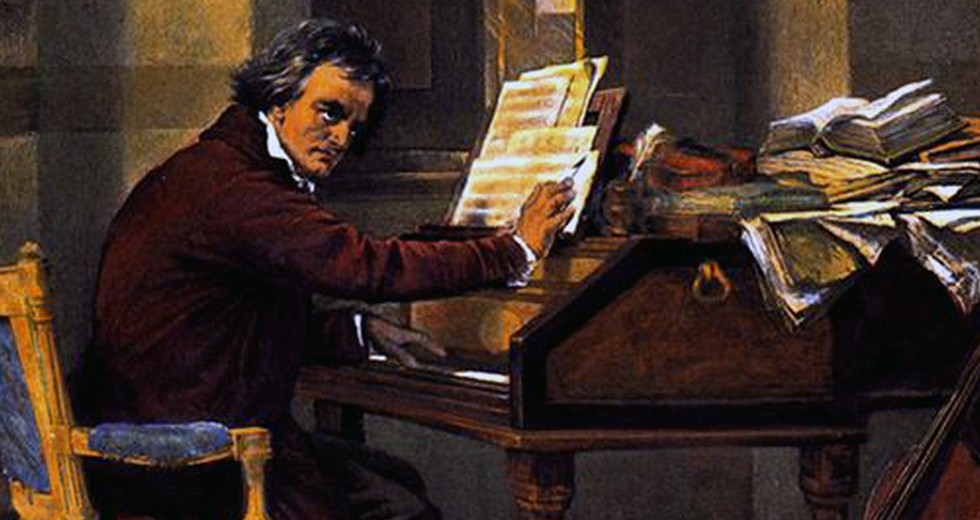
Although Ludwig van Beethoven wrote fewer piano concertos than he did symphonies (nine) or string quartets (16), the works nonetheless offer insight into his evolution as a composer.
The five piano concertos were composed from 1795 through 1809 during what are known as the early and middle periods of his career. This season, the Chicago Symphony Orchestra will perform three of the concertos, Nos. 2, 3 and 5. First up is the Piano Concerto No. 3, with David Fray as soloist, on Oct. 4-5, under Riccardo Muti. Later this season, Paul Lewis will perform Beethoven’s Piano Concerto No. 2, under Bernard Haitink, in concerts Oct. 25, 27 and 30, and Nicholas Angelich will be the soloist in the Emperor Concerto on March 7-10 under David Afkham.
“They’re each incredibly strong individually,” said acclaimed piano virtuoso Emanuel Ax, a featured soloist in the CSO’s complete cycle two seasons ago. “They represent different parts of his life, but certainly, there is no piano concerto from the last years. That may have been simply because he wasn’t playing. By all odds, he was certainly the greatest pianist of his time. I don’t think there is much dispute about that, and I think one of the reasons he wrote these pieces was to play them himself. They are on an incredible level of virtuosity. I don’t think there was anyone at the time who was writing anything that hard and that adventurousness. It’s difficult music, and I’m sure there weren’t many people if anyone other than Beethoven who could play it.”
Unlike some compositional cycles, which include infrequently heard works, all five Beethoven piano concertos are familiar and frequently performed. Ax is confident that such familiarity only adds to the appeal of such a project. “Hearing those pieces is always great, whether you hear them in a week, in two nights or over a season,” he said. “They’re fantastic. I think also the Beethoven concertos do sell tickets. They’re popular and deservedly so.”
Much can be learned from these works about Beethoven’s strengths as a performer, such as the passages of double notes. “In the First Concerto right away, the opening of the third movement is very hard,” Ax said. “For him, I think that was comfortable, and it’s the kind of thing you don’t see from many other composers, especially then.”
In addition, the composer had an incredible sense of timing and architecture — gifts that allowed him to experiment with ease, especially in the Fourth and Fifth concertos. “Starting the Fourth Piano Concerto with the piano alone is the least of it,” Ax said. “It’s things like measure no. 6, which takes you to a key that normally would be reserved for starting the second movement, which he does with the third concerto. In other words, E major from C minor or B major from G major. That kind of adventure is pretty amazing.”
As for pianists he admires in this repertoire, Ax has many. “There is no end of terrific performances of those pieces,” he said. He grew up listening to the 1956 recordings of the concertos featuring legendary pianist Arthur Rubinstein with conductor Josef Krips and the Symphony of the Air. Ax also was “incredibly taken” with the 1959-61 recordings of Leon Fleisher and the Cleveland Orchestra with famed conductor George Szell. “I think those are amazing and still remain pretty much near the top of anybody’s list,” he said. Ax was also an admirer of Rudolf Serkin’s approach to the concertos, and he described Vladimir Horowitz’s take on the Emperor Concerto as “pretty spectacular.” “Fima [Yefim] Bronfman recorded them with David Zinman, and those are wonderful performances,” Ax said.
The Fourth and Fifth concertos are likely performed the most, and Ax suspects that No. 2 is heard the least. However, he has no favorite among the five. “I couldn’t begin to pick one,” he said. “They’re all sensational pieces in their own way. One is grander than another. One is more chamber-like than another. But they are all extraordinary.”
A version of this article appeared previously on Sounds and Stories.